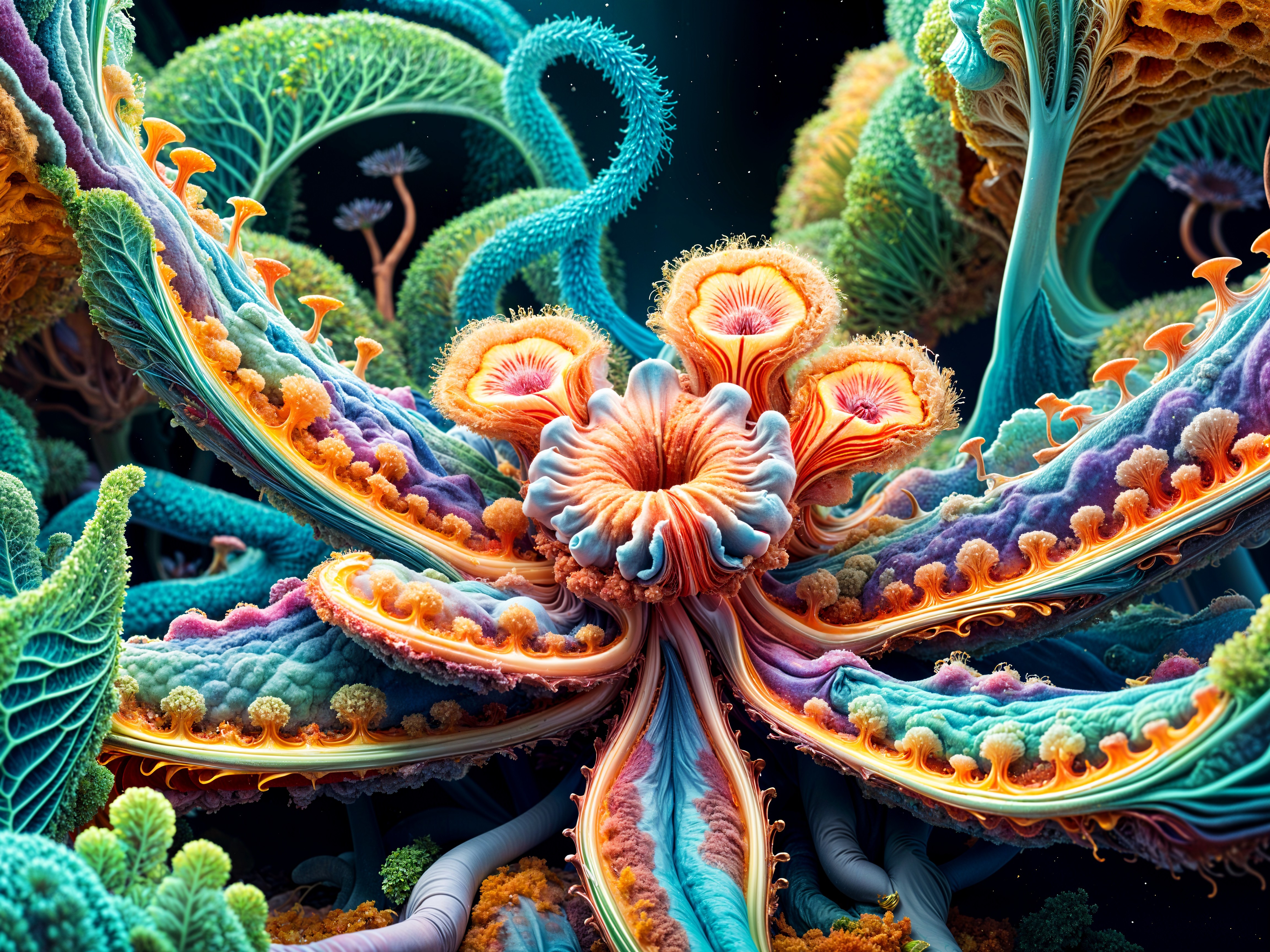Comments
Loading Dream Comments...
You must be logged in to write a comment - Log In

 Artist
Artist
Regnum: Xenoflora
Phylum: Luminophyta
Classis: Radiocorallia
Ordo: Spiralia iridensis
Familia: Chromatopetaliidae
Genus: Floracrusta
Species: Floracrusta luminifera
Description:
Floracrusta luminifera is a bioluminescent xenofloral organism native to the abyssal twilight biomes of exoplanetary coral forests, where atmosphere and ocean intermingle in a single dense medium. The organism’s sprawling architecture resembles both coral and cephalopod morphology—radiating arms of soft iridescent filaments converge around a central mouth-like calyx. Each arm undulates with fractal folds that act as both photosynthetic and sensory organs.
Anatomy and Function:
The petals, though appearing floral, are composed of semi-permeable tissue that oscillates in rhythm with the surrounding light currents, channeling photonic energy through chromatophores suspended in viscous cytoplasm. These chromatophores convert ambient radiation into bioelectric pulses, sustaining both structure and color. Beneath the outer membrane lies a network of microvascular tubes called luminodes, through which biophotonic fluids circulate.
Reproduction:
Reproduction occurs through a process known as inflorescent budding, where light gradients trigger the extrusion of smaller polyps from the arm margins. These polyps detach, drift, and root themselves in neural sediment, where they develop independent bioluminescent matrices.
Ecological Role:
In its native ecosystem, Floracrusta luminifera serves as both photosynthetic canopy and nutrient recycler. Its tendrils trap drifting detritus, which is enzymatically dissolved into mineral lumens—tiny motile beads of phosphorescent matter that feed surrounding symbionts.
Behavioral Notes:
When exposed to cosmic radiation surges, the species exhibits a rare defensive phenomenon termed Spectral Bloom, during which all chromatophores ignite in synchronized pulsing waves of violet, turquoise, and amber. This event can illuminate kilometers of oceanic darkness, warding off predators while attracting swarm-like microfauna that live within its folds.
Etymology:
From flora (“flower”) and crusta (“shell” or “crust”), denoting its layered, coral-like composition; luminifera meaning “light-bearing.”